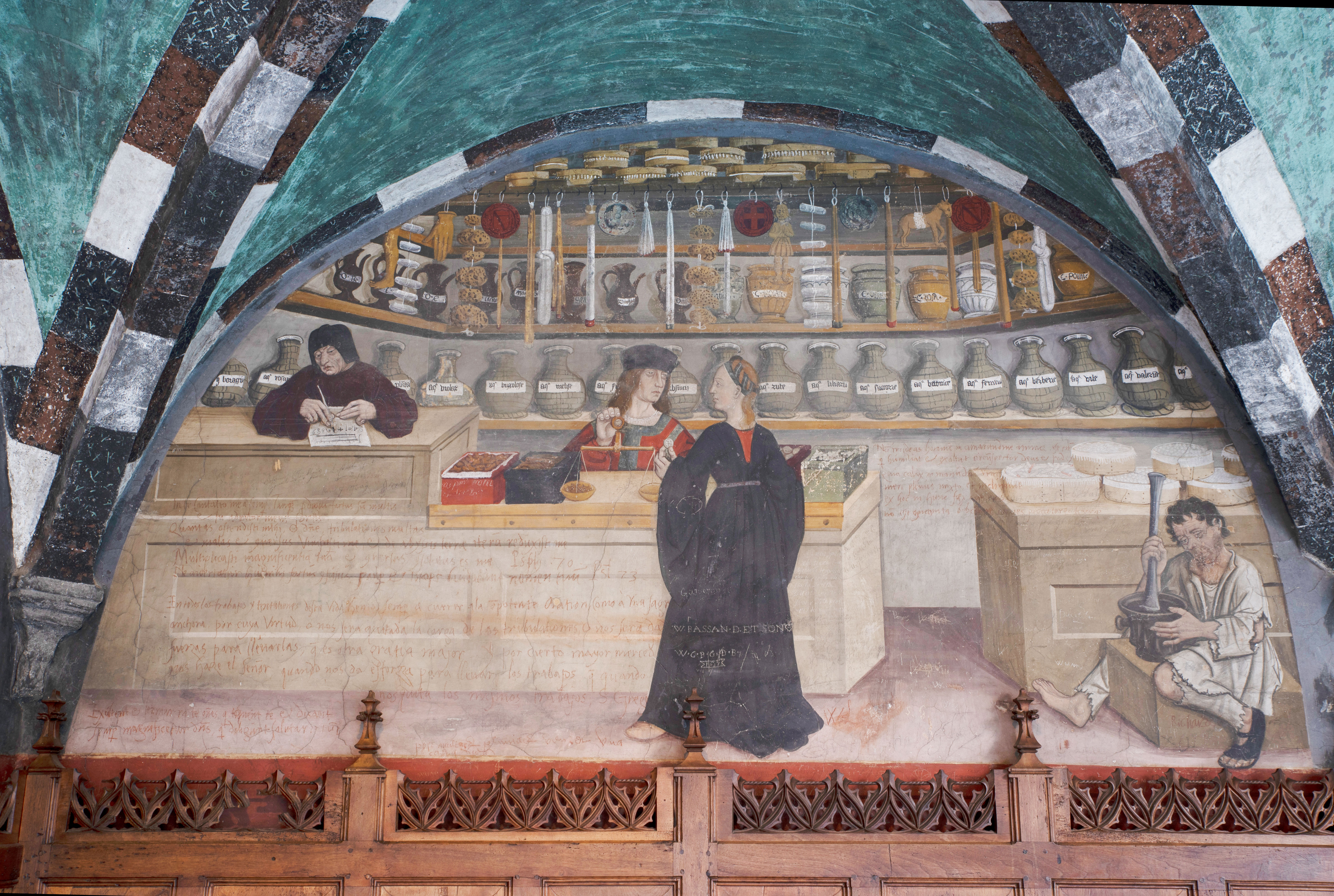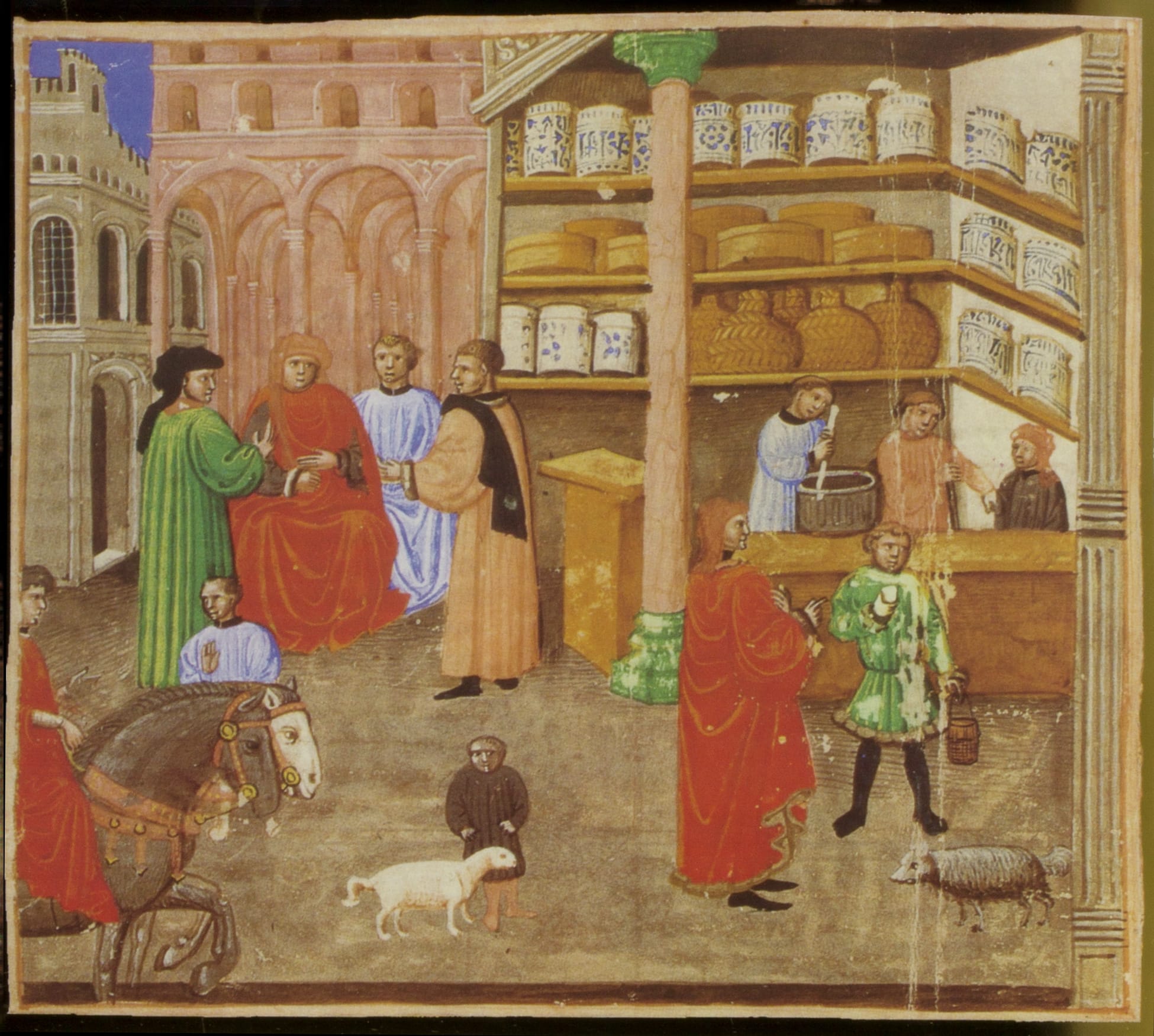Apothecaries
Early Modern Apothecary Shops
The last step necessary in order to obtain a medicine derived from natural substances, was to process it in a professional laboratory – but remember that private kitchens were also a sort of home-laboratory for simple remedies.

A few among the many apothecaries and apothecary shops were crucial sites in the urban and social fabric of the city: physicians and other medical professionals, noblemen and civil servants, artisans, people of middling status and servants met there, asking for medicinal compounds processed according to recipes, for raw and semi-processed substances. Benches ran along the walls where people waited for their turn and chatted: pharmacies offered shelter for sociability and leisure, spaces to exchange news as well – and sometimes where political and religious heterodoxies matured.
As to Venice, in which the art of pharmacy was particularly developed, in 1569 we count 85 apothecary shops, and by the early Seventeenth century the number had risen to over 100. (This amounts to roughly one shop per 130 inhabitants, whereas today the proportion is of one pharmacy per 2,700 inhabitants.)

But Materia Medica was the absolute protagonist: preserved in the storerooms, in the jars and vessels on display in the shop, and as a subject of conversation. At the Testa d’oro pharmacy of Rialto (whose golden sign still hangs over Rialto bridge), the magnificently illustrated herbal called ‘Codice Rinio [but Roccabonella]’ was on display for the use of experts, but also for the curious who wanted to see and know something more about plants.

In this section, through a few inventories of apothecary shops, you will get an idea of how many natural substances – vegetable, but also animal and mineral ones – were available in an average shop of 16th-and 17th-century Venice.
Inventories are lists of furniture, equipment, natural substances, medicines etc. generally drawn up after the death of the owner of the apothecary shop to get an idea of the amount and value of their movable assets.
Learn more:
- Girolamo Dian, Cenni storici sulla farmacia veneta, I-VII (Venezia, 1900-1908)
- Richard Palmer, Pharmacy in the Republic of Venice in the Sixteenth century, in A. Wear, R.K. French, I.M. Lonie (eds), Medical Renaissance of the Sixteenth Century, Cambridge University Press, Cambridge 1985, pp. 100-117
- Filippo De Vivo, “Pharmacies as Centres of Communication in ”Early Modern Venice”, Renaissance Studies, vol. 21, 4/2007, pp. 505–521
- Sabrina Minuzzi, Sul filo dei segreti. Farmacopea, libri e pratiche terapeutiche a Venezia in età moderna (Milano: Unicopli, 2016)